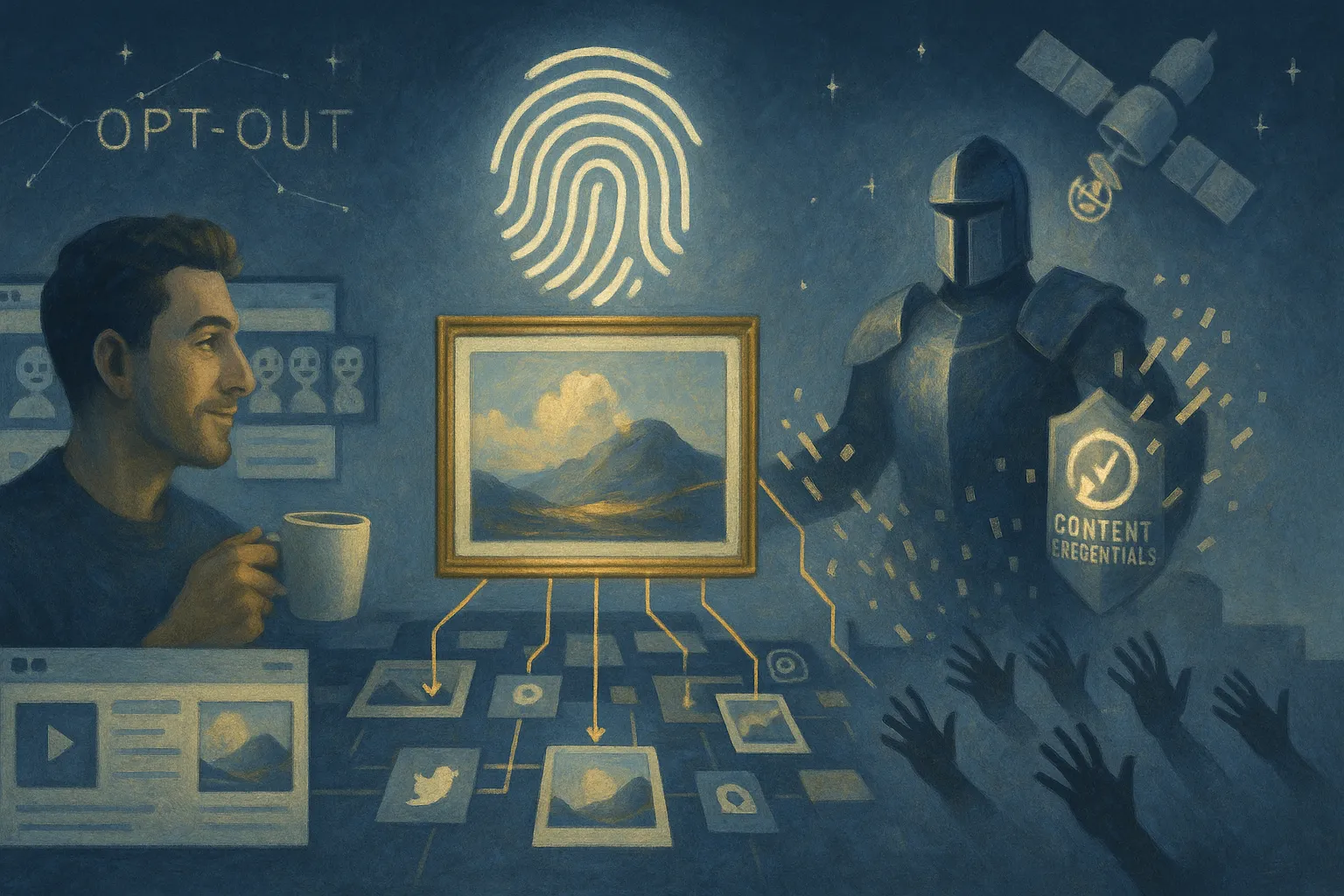AI News
Adobe Launches Digital Fingerprint System for Creatives
Adobe just made life harder for content thieves. Their new Content Authenticity web app lets creators embed invisible, tamper-resistant metadata into their work.
Think of it as a digital fingerprint that stubbornly clings to images even when they're screenshot and reposted across the internet's vast playground.
The app, which launched in public beta today, builds on Adobe's existing Content Credentials system. Artists can now attach their social media profiles, websites, and other identifying information directly into their work. It's like giving your art a permanent name tag that won't wash off in the digital rain.
For creators tired of playing whack-a-mole with their stolen content, the app offers a welcome respite. It can process up to 50 images at once, saving precious hours that could be better spent creating – or perhaps enjoying a coffee while watching content thieves scratch their heads in confusion.
How it works
The system also tracks image editing history and helps prevent AI systems from training on artists' work without permission. It's a particularly timely feature as AI art generators continue to vacuum up online images with the enthusiasm of a caffeinated roomba.
Free Daily AI Newsletter
Monday - Friday at 6 am PST
No spam. Unsubscribe anytime.
Adobe didn't forget about security. The system integrates with LinkedIn for identity verification, making it harder for people to link fake profiles to Content Credentials. The LinkedIn connection feels like a gentle jab at X (formerly Twitter), which abandoned Adobe's Content Authenticity Initiative after Elon Musk transformed the platform's verification system into a paid subscription perk. Sometimes, corporate breakups can be entertaining.
Getting Started
Currently, the app is free during its beta phase, though Adobe remains coy about future pricing. All you need is an Adobe account – no Creative Cloud subscription required. The system works with both JPEG and PNG files, with support for video and audio promised "soon." For now, it's like a bouncer for still images, checking IDs at the digital door.
The inspection tools built into the app can recover Content Credentials even when image hosting platforms try to strip them away. It's like having a digital detective that can piece together the trail of breadcrumbs back to the original creator, even after the internet tries to sweep them away.
Perhaps most importantly, the app helps creators opt out of AI training with a single click, rather than having to file separate requests with each AI company. While there's no guarantee every AI developer will honor these tags, it's a start. Think of it as putting up a "No Trespassing" sign that actually sticks to your fence.
The tool isn't just for professional creators. Anyone can use the Chrome extension or web app to check if images they find online have Content Credentials attached. It's like having a built-in authenticity checker for the internet's vast art gallery.
Future Development
Adobe is working with policymakers and industry partners to make these opt-out mechanisms more effective. Meanwhile, creators can use this alongside other protective measures like Glaze and Nightshade. It's a bit like wearing both a belt and suspenders – sometimes extra security is worth looking a little paranoid.
The system's ability to reveal whether AI tools were used to create or manipulate images adds another layer of transparency. As deepfakes become more convincing, having a reliable way to trace an image's origin becomes increasingly crucial. It's like having a truth serum for photos in an age where seeing isn't always believing.
Why this matters:
- In the wild west of digital content sharing, Adobe's tool finally gives creators a way to brand their work with permanent, traceable ownership information – think cattle branding for the digital age
- As AI-generated content floods the internet, having a reliable system to verify human-made work and protect artists' rights isn't just nice to have – it's becoming as essential as locking your front door
Read on, my dear:








